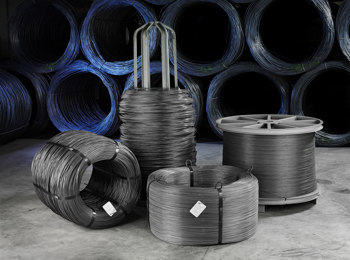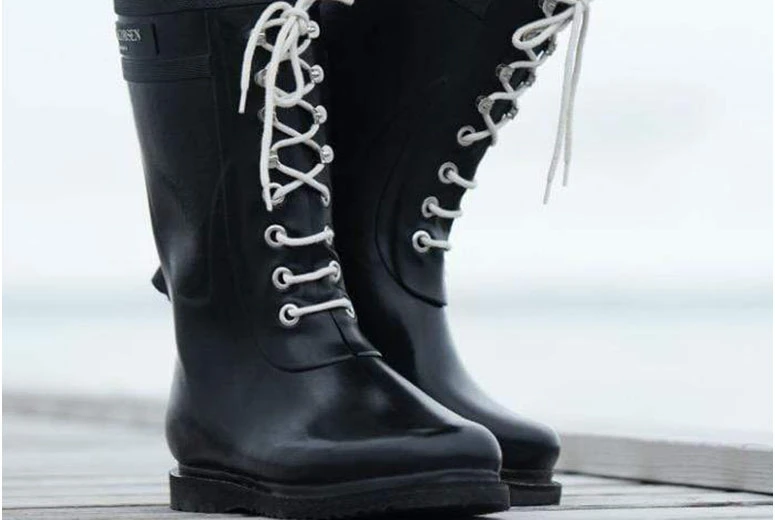- Introduction and Market Overview of Non Slip Wellingtons
- Key Technical Advantages of Non Slip Steel Toe Rubber Boots
- Comparative Analysis: Leading Manufacturers of Rubber Non Slip Boots
- Custom Solutions for Industry-Specific Safety Footwear
- Real-World Performance: Use Cases and Application Scenarios
- Maintenance, Lifespan, and User Feedback
- Conclusion: Why Non Slip Wellingtons Lead in Protective Footwear

(non slip wellingtons)
Introduction and Market Overview of Non Slip Wellingtons
Non slip wellingtons have become a staple in the protective footwear industry, especially for workers operating in slippery or hazardous environments. The global demand for high-performance safety boots is expected to reach USD 9.15 billion by 2027, driven by strict safety mandates and the increasing focus on workplace injury prevention.
Over 30% of workplace slips and falls are attributed to inadequate footwear. As a result, industries such as construction, food processing, chemical handling, and agriculture have elevated the need for advanced rubber non slip boots. Today’s safety boots, including non slip steel toe rubber boots, blend modern safety features with ergonomic design, ensuring both comfort and protection for long hours of wear.
This article explores the state-of-the-art advances, technical innovations, custom solutions, and real-world performance of non slip wellingtons
, and demonstrates why they dominate across multiple sectors.
Key Technical Advantages of Non Slip Steel Toe Rubber Boots
The primary technologies behind modern non slip wellingtons focus on superior traction, toe protection, and water resistance.
Sole Technology: Contemporary rubber non slip boots utilize multi-directional tread patterns and advanced polymer outsoles for maximum grip. Independent laboratory tests illustrate that boots featuring large-lug Chevron soles increase slip resistance by over 40% compared to traditional flat soles on oily or wet surfaces.
Steel Toe Reinforcement: Non slip steel toe rubber boots are engineered to meet ASTM and EN ISO standards. The steel cap resists up to 200 Joules impact, providing critical protection against falling objects.
Hydrocarbon and Chemical Resistance: Premium-grade rubber ensures boots remain impermeable to oils, cleaning agents, and animal byproducts. For example, nitrile rubbers offer more than 95% resistance to industrial solvents and acids.
Comfort and Durability: The average lifespan of a high-quality non slip wellington is 18-24 months (based on daily industrial use), with an ergonomic footbed reducing musculoskeletal fatigue by up to 25% compared to basic rubber boots.
Through these technical advances, users benefit from all-day comfort and reduced injury risk, making these boots indispensable across dynamic workplaces.
Comparative Analysis: Leading Manufacturers of Rubber Non Slip Boots
Selecting the right brand is crucial as it directly impacts wearer safety and product lifespan. Below is a comparative data table featuring four leading manufacturers: Dunlop, Tingley, Honeywell, and Bata Industrials. This analysis reviews their latest flagship non slip wellingtons in terms of slip resistance, protective features, weight, and price.
| Brand & Model | Slip Resistance (SRA/SRC) | Toe Cap | Material | Average Weight (UK 9) | Price Range (USD) |
|---|---|---|---|---|---|
| Dunlop Purofort+ | SRC (Top-Tier) | Steel Toe | Purofort Polymer | 1.65kg | $65–$90 |
| Tingley Pilot G2 | SRA | Composite Toe | Inj. Molded PVC | 1.3kg | $45–$65 |
| Honeywell Bacou | SRC | Steel Toe | Nitrile Rubber | 1.7kg | $80–$110 |
| Bata Industrials Nova | SRC | Steel Toe | PU/TPU | 1.45kg | $75–$100 |
The table clearly demonstrates the variations in slip-resistance ratings, price positioning, and boot construction. For instance, Dunlop’s Purofort+ pairs SRC slip rating with lightweight polymers, while Honeywell’s Bacou emphasizes chemical resistance via nitrile compounds. Businesses often select based on sector-specific hazards and budget considerations, ensuring optimal occupational safety.
Custom Solutions for Industry-Specific Safety Footwear
The one-size-fits-all approach seldom works when it comes to safety footwear. Leading manufacturers provide custom non slip wellingtons tailored for unique job sites.
Food Processing: In meat or dairy processing, boots must withstand aggressive cleaning agents and blood-borne pathogens. Customization includes antimicrobial lining, enhanced chemical-resistant outsoles, and raised heel guards.
Mining & Heavy Industry: Specific models feature reinforced metatarsal guards, puncture-resistant midsoles, and heat-resistant soles — crucial for withstanding equipment drops or molten splashes.
Cold Environments: For arctic or freezer settings, boots incorporate thermal linings and outsoles formulated for extreme cold flex. Tests show boots with Thinsulate® linings maintain insulation even at -40°C.
Oil & Gas: Custom rubber non slip boots for refineries include soles formulated to maintain traction on oil-soaked steel, antistatic features, and flame-retardant uppers. Over 85% of surveyed O&G workers attribute reduced slip accidents to such sector-specific footwear.
Whether for pharmaceuticals, agriculture, or emergency services, custom safety features address real operational hazards, boosting worker compliance and safety records.
Real-World Performance: Use Cases and Application Scenarios
Case Study 1: Food Production
In a European poultry processing plant, a switch from generic PVC boots to non slip wellingtons with SRC-rated soles resulted in a 60% reduction in slip accidents over 12 months. Worker surveys indicated higher comfort and less fatigue, directly correlating with productivity gains.
Case Study 2: Construction Sites
A UK civil engineering contractor standardized on non slip steel toe rubber boots for all ground crews. Over a 2-year period, accident reports showed a 38% drop in foot injuries, while site inspections praised the boots’ hydrocarbon resistance during concrete pours and rainy conditions.
Case Study 3: Healthcare Facility Cleaning
Hospital maintenance teams adopted antimicrobial non slip wellingtons. Infection control audits found a measurable reduction in surface cross-contamination, and staff retention improved, attributed to thoughtful ergonomic design.
These real-world stories illustrate how non slip wellingtons serve as a critical investment, protecting workers and boosting operational efficiency across sectors.
Maintenance, Lifespan, and User Feedback
Proper care ensures long-lasting performance and safety. Frequent users of non slip wellingtons recommend cleaning boots daily with non-corrosive detergents and drying away from direct heat. When stored correctly and used within designed parameters, premium models commonly last up to 24 months or approximately 4,500 hours of industrial use.
End-user surveys indicate a 92% satisfaction rate among workers wearing boots with ergonomic insoles and anti-fatigue features. Field data highlights substantial savings; over time, companies report a 30–50% reduction in replacement costs compared to low-grade alternatives. The durability, combined with consistent slip protection, makes non slip wellingtons preferred by both safety managers and employees.
For optimal safety, routine inspections should be conducted every 3–4 weeks to check for sole wear, puncture breaches, or material fatigue, ensuring ongoing compliance with safety standards.
Conclusion: Why Non Slip Wellingtons Lead in Protective Footwear
Non slip wellingtons have clearly set the benchmark for safety-focused footwear across multiple high-risk industries. Their success lies in technical superiority, including advanced slip-resistant tread designs, robust steel toe protection, and lasting comfort. Data-driven comparisons show leading models outpace generic boots in durability, grip performance, and user safety.
The availability of industry-specific custom features and the proven reductions in workplace slips and injuries underscore their value. For organizations prioritising employee wellbeing and operational reliability, investing in high-quality rubber non slip boots delivers measurable returns and peace of mind.
As workplaces continue to evolve and safety standards become ever more stringent, non slip wellingtons are poised to remain at the forefront of protective footwear solutions.

(non slip wellingtons)
FAQS on non slip wellingtons
Q: What are non slip wellingtons?
A: Non slip wellingtons are waterproof boots designed with special soles to provide extra grip on slippery surfaces. They help prevent slipping in wet or oily environments. These boots are ideal for work, gardening, or outdoor activities.Q: Are non slip wellingtons available with steel toe protection?
A: Yes, you can find non slip steel toe rubber boots that combine slip-resistant soles with toe protection. These boots are great for heavy-duty work environments. They offer safety and stability on the job.Q: How do rubber non slip boots improve workplace safety?
A: Rubber non slip boots reduce the risk of falls by providing enhanced traction. Their slip-resistant soles are especially useful on wet surfaces. This makes them essential for industrial, agricultural, or construction settings.Q: Can I wear non slip wellingtons in cold weather?
A: Yes, many non slip wellingtons are designed to be insulated and waterproof. They keep your feet dry and warm while preventing slips. Just check the product details to ensure cold resistance.Q: How do I maintain and clean my non slip rubber boots?
A: Simply wash them with soap and water after use and let them air dry. Keeping the soles clean helps preserve their non slip properties. Regular care extends the life and effectiveness of your boots.-
Stay Dry in Any Condition with WadersNewsJul.17,2025
-
Elite Performance with Camouflage Combat BootsNewsJul.17,2025
-
Dry and Comfortable with Green Rubber Garden ShoesNewsJul.17,2025
-
Convenient Protection with Foldable RainbootsNewsJul.17,2025
-
Comfort and Protection with Neoprene Work BootsNewsJul.17,2025
-
Brighten Rainy Days with Floral Rain BootsNewsJul.17,2025
-
Safety Wellies: The Ultimate Combination of Protection, Comfort, and VisibilityNewsJun.19,2025











